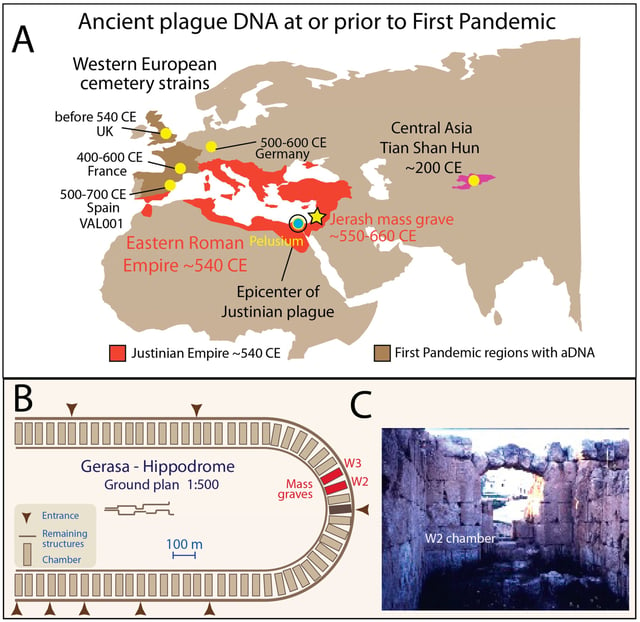Overview
- Researchers sequenced Yersinia pestis DNA from eight teeth recovered beneath the Roman hippodrome in Jerash, providing the first direct genomic evidence within the Byzantine heartland.
- The genomes are nearly identical and date to AD 550–660, indicating a rapid urban outbreak that led to the arena’s reuse as a mass burial site.
- A broader analysis in Pathogens situates the Jerash strain within deep Eurasian reservoirs and concludes later plague pandemics arose independently from animals rather than from one persistent human-transmitted lineage.
- The studies, led by teams at the University of South Florida and Florida Atlantic University, used targeted ancient-DNA methods on human dental material to recover the pathogen’s genomes.
- The researchers plan expanded sampling at Venice’s Lazaretto Vecchio, while rare recent U.S. cases highlight plague’s continued, though limited, public-health relevance.

